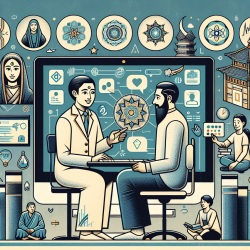In the evolving landscape of special education, the integration of virtual therapy services has emerged as a game-changer. At TinyEYE, we are dedicated to providing high-quality online therapy to schools, ensuring that every student has access to the support they need, regardless of geographical barriers. This blog aims to shed light on the benefits of virtual therapy and how it can be a transformative tool for special education advocacy groups.
Why Virtual Therapy?
Virtual therapy, also known as teletherapy, leverages technology to deliver therapeutic services remotely. This approach is particularly beneficial in special education, where students often require consistent and specialized support. Here are some key advantages:
- Accessibility: Virtual therapy breaks down geographical barriers, ensuring that students in remote or underserved areas can receive the same level of care as those in urban settings.
- Convenience: Online sessions can be scheduled flexibly, reducing the need for travel and allowing therapy to fit seamlessly into a student's daily routine.
- Personalized Care: With online platforms, therapists can tailor sessions to meet the individual needs of each student, using a variety of digital tools and resources.
- Parental Involvement: Virtual therapy allows parents to be more involved in their child's progress, as they can easily join sessions or review recordings.
The Role of Speech Therapy Evaluation
Speech therapy evaluation is a critical component of our services at TinyEYE. These evaluations help in identifying specific speech and language challenges that a student may face. Conducted online, these assessments are thorough and designed to create a comprehensive understanding of each student's needs.
Here’s how an online speech therapy evaluation works:
- Initial Consultation: The process begins with an initial consultation to understand the student's background and specific concerns.
- Assessment Tools: A variety of digital tools and standardized tests are used to evaluate the student's speech and language abilities.
- Feedback and Recommendations: Post-evaluation, therapists provide detailed feedback and create a personalized therapy plan tailored to the student's needs.
Advocacy Groups: The Catalyst for Change
Special education advocacy groups play a crucial role in ensuring that students receive the support they need. By championing the integration of virtual therapy, these groups can help bridge gaps in service delivery and ensure equitable access to therapy for all students. Here are some steps advocacy groups can take:
- Raise Awareness: Educate parents, educators, and policymakers about the benefits of virtual therapy and its impact on student outcomes.
- Collaborate with Providers: Partner with online therapy providers like TinyEYE to create tailored programs that meet the specific needs of your community.
- Advocate for Funding: Lobby for funding and resources to support the implementation of virtual therapy services in schools.
- Monitor Progress: Continuously monitor and evaluate the effectiveness of virtual therapy programs to ensure they meet the desired outcomes.
Taking the Next Step
At TinyEYE, we believe in the power of virtual therapy to transform special education. By partnering with advocacy groups, we can ensure that every student has the opportunity to thrive. If you’re interested in learning more about our services or how you can advocate for virtual therapy in your community, please reach out to us. Together, we can make a difference.
Ready to take the next step? Contact TinyEYE today to explore how we can support your special education initiatives through innovative online therapy solutions.










